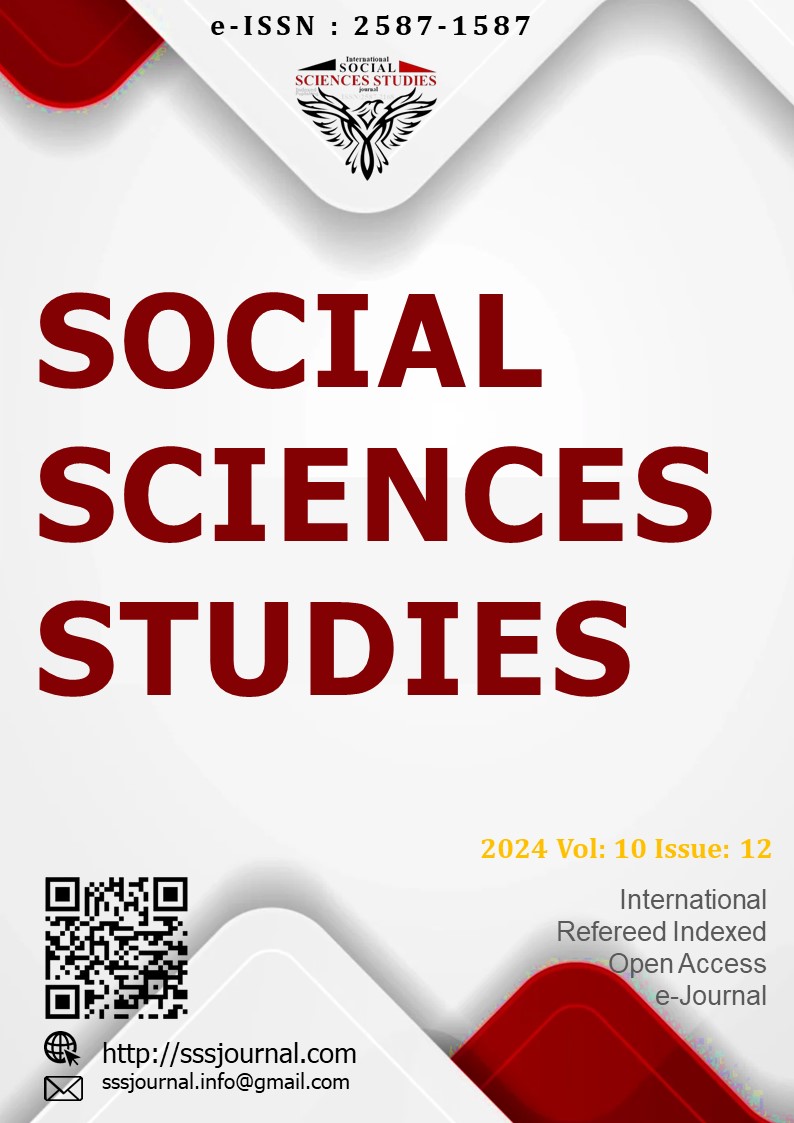Author :
Abstract
Bu çalışmamızda Søren Kierkegaard’ın felsefesini varoluş alanlarını ve estetik varoluş alanında özgürlük sorununu ela aldık. Kierkegaard yaşamı boyunca hep zıtlıklar ve çatışmalar içinde kalmıştır ve bu durum onun felsefesinin şekillenmesini ciddi boyutta etkilemiştir. Bu karşıt yaşamın gölgesinde bireyin kendi benini oluşturması üzerinde durmuş ve varoluş alanlarından bahsetmiştir. Her alanı çeşitli kahramanlarla örnekleyen ünlü filozof estetik, etik ve dini olarak üç varoluş alanından söz eder. Hazlarının adeta kölesi olan estetik alanın kahramanı iyi ve kötüden değerlerden uzaktır, gündelik zevkleri için yaşar ve sorumluluk duygusu taşımaz. Sadece bulunduğu anı yaşar ve birey olabilmenin kaygısını taşımaz. Etik alan karşımıza estetik alandan kaçan ya / ya da ikilemini sonuna kadar yaşayan bireyi çıkarır. Bu alanda evlilik de önemli bir yere sahiptir çünkü estetik alandan kaçan kahraman mutluluğu evlilikle bulabilir. Etik alan aynı zamanda toplumsallık demektir. Kişi artık toplum için bir görev insanıdır ve eylemlerini toplumun yararına seçer. Son alan ise dini alandır ve Kierkegaard için bu alan asıl olan alandır. Bireyin kendini gerçekleştirmesi Tanrı ile kuracağı ilişki ile mümkündür. Artık akılsal bir seçim değil bir sıçrayış ile öznel bir tanrıya ulaşma söz konusudur ve tam bir teslimiyeti gerektirir. İşte filozofumuzun bu varoluş evrelerini dile getirirken sürekli değindiği bireyin kendi seçimlerini yapabilmesi, sorumluluk alabilmesi ve ancak bu sayede özgür olabilmesi söz konusudur. Özgürlük neyi seçeceğine karar verebilmek ve bunun için bir kaygı ve umutsuzluk durumu yaşamakla kendini gösterir. Bütün bu koşullar eşliğinde de estetik varoluşta birey özgür olamaz çünkü o bugünü yaşayıp gelecekle ilgili hiçbir şeyle ilgilenmemek üzerine kurulu bir sonlu varlıktır..
Keywords
Abstract
In this study, we examined Søren Kierkegaard's philosophy, focusing on the spheres of existence and the problem of freedom within the aesthetic sphere. Under the shadow of this dual existence, he emphasized the individual's process of forming their self and introduced the concept of spheres of existence. The renowned philosopher, illustrating each sphere with different archetypes, identifies three spheres of existence: aesthetic, ethical, and religious. The aesthetic sphere's archetype, enslaved by pleasures, is detached from values like good and evil, living solely for immediate gratification without any sense of responsibility. This individual exists only in the moment, devoid of the anxiety of becoming a self. The ethical sphere, on the other hand, features individuals who flee the aesthetic sphere and deeply experience the "either/or" dichotomy. Marriage holds a significant place in this realm, as it symbolizes a pathway to happiness for those escaping the aesthetic life. The ethical sphere also embodies social responsibility; the individual acts as a dutiful member of society, choosing actions for the collective good. The religious sphere, for Kierkegaard, represents the ultimate stage. Here, self-realization is achievable only through a personal relationship with God. This involves a leap of faith rather than a rational choice, demanding complete surrender. Kierkegaard emphasizes that true freedom emerges when individuals make choices, assume responsibility, and confront the accompanying anxiety and despair. Within the aesthetic sphere, freedom is unattainable, as individuals focus solely on the present, neglecting the future and remaining finite beings





